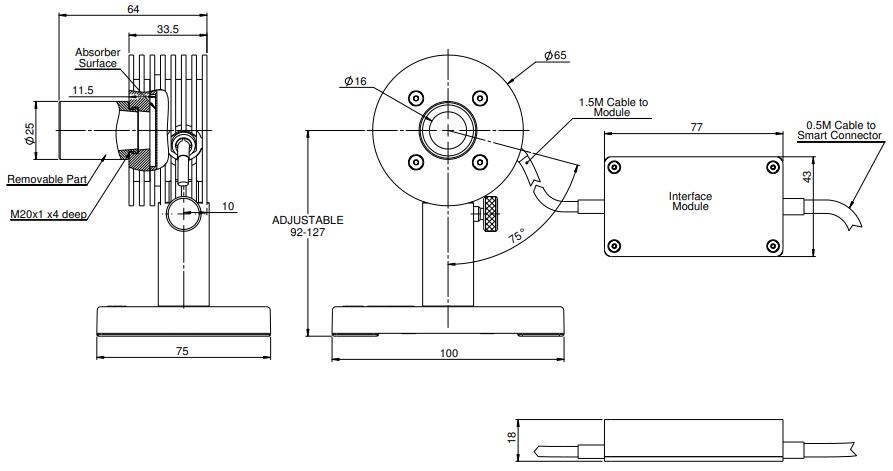Updated:2025-03-13
Views:1690
 WeChat
WeChat
 QQ
QQ
 Online Service
Online Service
The BeamTrack series 10A-PPS laser measurement sensor measures laser beam size and position well as power and energy. It has a 16mm aperture and can measure beam size to 5% accuracy and position to 0.1mm accuracy. It measures power from 20mW to 10W and energy from 6mJ to 2J. The sensor comes with a 1.5m cable that connects it to the electronic box, and another 0.5m cable that connects the box to a Meter or PC interface.

| Absorber Type | Broadband |
| Aperture | Ø16mm |
| Spectral Range | 0.19 - 20µm |
| Power Range | 20mW-10W |
| Energy Range | 6mJ-2J |
| Dimensions | Ø65 W x 34 D (mm) |
| Max Pulse Energy | 2J |
| Max Average Power Density | 28kW/cm² |
| Response Time | 0.8 s |
| Max Energy Density (for <100ns) | 0.3J/cm² |
| Max Energy Density (for 2ms) | 2J/cm² |
| Max Average Power | 10W |
When using the BeamTrack sensor with StarLab on a PC, can StarLab be used to record position and size data? What is the sampling rate?
StarLab can record the beam position. The power measurement value of Ophir power sensor is recorded 15 times per second. When the BeamTrack sensor is connected to StarLab through Juno, the position/size measurement value is also recorded 15 times per second. When the BeamTrack sensor is connected to the StarLab via the Vegas/Nova II, the position/size measurements are recorded once per second. This is because in Vega/Nova II, the sampling speed for these parameters is slow.
Can the BeamTrack sensor be used to measure the position and size of the pulsed laser?
Because position and size are measured together with power, if the laser pulses at a rate at which the average power can be measured, then position and size can also be measured.
For what type of laser points, the BeamTrack sensor can be used to measure the position and size?
The BeamTrack sensor can measure the position of any beam shape. Only the size of the Gaussian (TEM00) beam can measure the specified accuracy. For other laser modes, the size measurement is relative.
Must a specific sensor be used only with the instrument used when ordering?
Ophir instruments and sensors are calibrated independently. Each instrument has the same sensitivity as the other instrument, and the error is about 2%. Each sensor is calibrated independently of a specific instrument, and its calibration information is contained in the DB15 plug. When the sensor is connected to the instrument, the instrument will read and interpret this information. Since the accuracy of the sensor is usually+/- 3%, the additional 0.2% error that may result from inserting different instruments can be ignored, so it does not matter which calibration instrument is used for a specific calibrated sensor.
Customer Service QQ
Customer Hotline:
Technical Supports